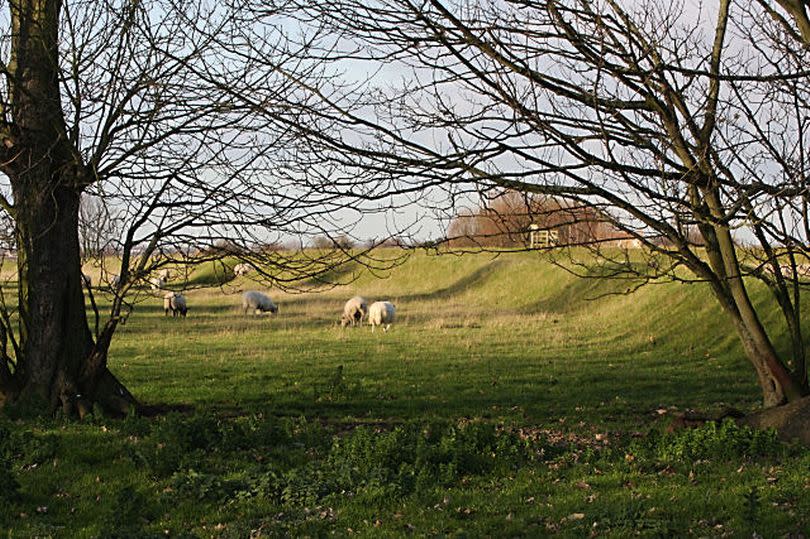The fenland hillfort where a fierce battle is believed to have taken place

Nestled within a patchwork of fields in Fenland is a manmade hill with a rather violent history. Today, sheep can often be seen grazing the site but thousands of years ago, it is thought that a fierce battle took place here.
Stonea Camp is an Iron Age hill fort located at Stonea near March in the Cambridgeshire Fens. Situated on a gravel bank just two metres above sea-level, it is the lowest hill fort in Britain.
But Stonea Camp is so much more than a place that was created in the Iron Age. The Fort is also believed to be the possible site of a ferocious battle when the powerful Romans went head to head with the fierce Iceni Tribe of East Anglia.
Read more: Enchanting woodland just outside Cambridge brought to life by beautiful blooming flowers
Read more: The Suffolk beach that will no longer exist in 100 years
The battle took place in 47 AD and is mentioned by Tacitus who is a Roman historian and recorded the stories of many important events in Roman history.
The battle was between the Iceni tribe and a Roman auxiliary force under governor Ostorius Scapula. The story goes that the Iceni led neighbouring tribes in an uprising against the governor but he defeated them by storming a hill fort.
It was a hard fought battle and after their defeat, the Romans installed Prasutagus as a pro-Roman ruler of the Iceni. He was the husband of Boudicca who only 13 years later in 60 AD, would lead another uprising against the Romans after his death.
Unfortunately, Tacitus never named the specific hillfort where the battle took place, but there is some evidence that suggests Stonea Camp is the likely location for the battle.
Human remains have been found around the site including sword-marked adult bones and the skull of a child believed to be around four-years-old that had been cut by a sword. This is believed to indicate that the inhabitants were possibly trapped and attacked within the settlement.
Other excavations on the site have revealed late Iron Age and early Roman pottery, and metalwork in the form of bronze brooches, and gold and silver coins including some Celtic coins.
Stonea was also the location of an impressive four-storey Roman tower that was built within site of the Stonea Camp fortifications. The building is believed to have been constructed to suppress further Iceni rebellion in East Anglia or settlement at this site.
Today, Stonea Camp is a peaceful place to visit and information boards help tell its fascinating story.
Do you want more of the latest Cambridgeshire news as it comes in? Sign up to our dedicated newsletter to make sure you never miss a big story from Cambridge or anywhere else in the county. You can also sign up to our dedicated Peterborough, Traffic and Crime newsletters for the latest updates on the topics you are most interested in.

 Yahoo News
Yahoo News 
